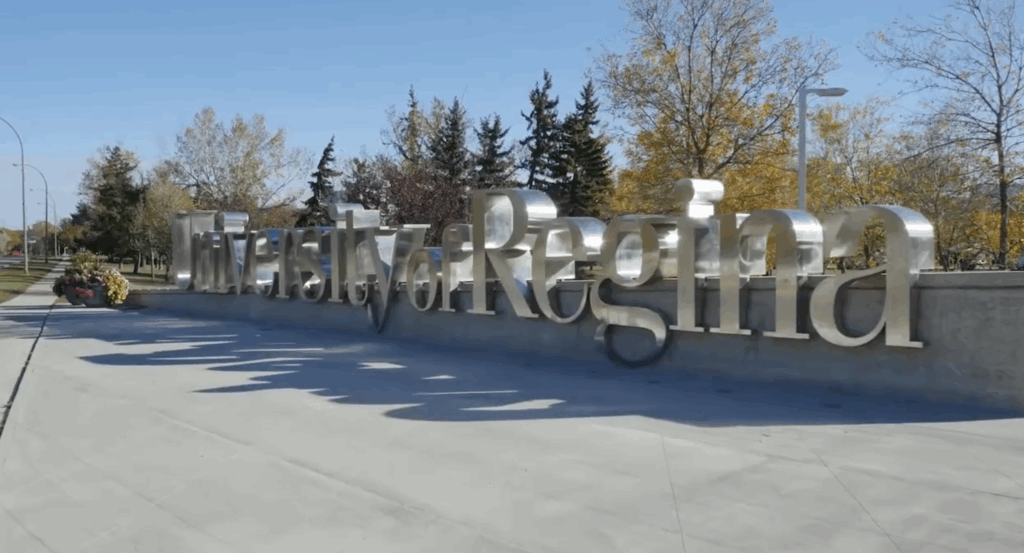Build Canada, a new public policy think tank seeking to solve Canada’s economic problems, has ties to the Conservative Party of Canada, and appears to be shaping their energy policy too.
Created by major figures in Canada’s tech sector in February 2025, Build Canada bills itself as a non-partisan “platform of bold ideas for growth, innovation, and prosperity.” They are focused primarily on selling more Canadian resources internationally, as well as changes to boost productivity, and tax reforms to “drive innovation and investment.”
Build Canada allegedly grew out of a WhatsApp group created by Tobias Lütke, the founder and CEO of Shopify, who had grouped together tech executives frustrated by what they believe to be impediments to innovation.
According to The Tyee, former Shopify executive Daniel Debow is principally in charge of running the organization. Build Canada does not appear to be registered as a third party advertiser, nor does it seem to be running ads or soliciting donations. Instead, Build Canada asks people who support their policy memos to share them on social media. As of this report, about 30 policy memos have been published on the Build Canada website.
Anti-Regulation Agenda
Build Canada outlines its energy agenda in a memo entitled “Building to Secure Canadian Energy Independence.” Written by billionaire oil baron Adam Waterous, the memo advocates for failed energy infrastructure projects and lower government regulations.
These anti-regulation proposals echo demands in an open-letter recently shared by Canada’s major oil and gas companies. Waterous is a signatory of that open letter as well. The five point plan is couched in the language of Indigenous empowerment and cutting red tape, but demands that whoever becomes the next prime minister eliminate any regulations that might impede fossil fuel infrastructure development, such as the Impact Assessment Act and West Coast tanker ban. It also insists on eliminating the emissions cap and federal carbon levies, and argues that “regulatory processes need to be streamlined and simplified” so that subsequent decisions can “withstand judicial challenges.”
Conservative Party leader Pierre Poilievre endorsed all five of Big Oil’s demands about two weeks after they first appeared, releasing a statement on the Conservative Party website on April 1 that was then covered by Canadian news media the same day. Alberta Premier Danielle Smith also appeared to endorse the demands during an April 1 press conference in which she defended her appearance at a PragerU fundraiser with American far-right activist Ben Shapiro.
Though not identical, the language in the list of demands is similar to that in the memo written by Waterous for Build Canada. Both posit that Canada’s government has created impediments to the development of the oil and gas sector. This contrasts with expert analysis of federal government subsidies to the fossil fuel sector. Environmental Defence recently issued it’s annual report on the subject, revealing that Canada’s federal government contributed nearly $30 billion to the sector in 2024 alone, and nearly $80 billion over the last five years.
In addition, both texts primarily emphasize crude oil pipeline and LNG infrastructure development, but omit other technologies — such as hydrogen and carbon capture — that Canada’s oil and gas sector have previously argued would help them corner developing markets for alternative and lower-emissions fuels. Both texts also emphasize the need for Indigenous participation, despite advocating for a removal of the regulations, consultations, and other checks and balances that have given Indigenous communities serious leverage in energy infrastructure negotiations.
Conservative Connections
Both Adam Waterous and Build Canada are connected to the Conservative party.
Adam Waterous is the CEO of Waterous Energy Fund as well as the Executive Chairman of Strathcona Resources Ltd. Elections Canada donation records reveal both he and his wife Janet have been longtime Conservative Party donors, and that both donated to Pierre Poilievre’s 2022 party leadership bid. As previously reported by both the National Observer and the CBC, Waterous has made other financial contributions to the Poilievre campaign and has attended his fundraisers.
Build Canada has several ties to the Poilievre campaign and the Conservative Party of Canada that aren’t mentioned on their website, nor have been previously reported.
Ana Curic, whose position within the organization isn’t specified but is listed first and foremost on Build Canada’s website, is a former senior official with various responsibilities in the government of Stephen Harper, including chief of staff to former immigration minister Jason Kenney. Curic is also listed as a senior consultant with Maple Leaf Strategies.
As previously reported by DeSmog, at least two members of Poilievre’s ‘inner circle’ are lobbyists connected to Maple Leaf Strategies.
This includes Ian Todd, who is currently Poilievre’s chief of staff and who previously held the same position with Stockwell Day, a former leader of the Canadian Alliance Party who held various cabinet positions during the Harper administration. Todd is formerly a registered lobbyist with Maple Leaf Strategies. Matthew Conway is another member of Poilievre’s inner sanctum who has served as a senior consultant with the firm. Conway is also a vice president of the Conservative Party’s National Council.
Responding to DeSmog’s questions, Ana Curic said that neither Todd nor Conway are currently employed by Maple Leaf Strategies, that she volunteers her time with Build Canada, and that Build Canada is completely separate from Maple Leaf Strategies. She said Maple Leaf Strategies did not create Build Canada, nor that any of Maple Leaf’s clients asked the firm to create Build Canada. She added Maple Leaf does not work for any political party, and they strictly follow Canada’s lobbying rules.
Adam Waterous did not respond to DeSmog’s request for comment.
Maple Leaf Strategies represents, among others, Enbridge, Canada’s mining sector, and Facebook.
DeSmog has previously reported that Enbridge, the gas and pipeline giant, was found to have funded and supported an astroturfing group to advance a pipeline project in Minnesota. The campaign included considerable ad buys on social media platforms, such as Facebook, a common tactic employed by astroturfing groups.
What About Renewable Innovation?
While both Adam Waterous’ Build Canada memo and the five demands listed in Big Oil’s open letter are ostensibly intended to guarantee Canada’s energy independence, there is no mention of the renewable energy systems that could eliminate Canada’s dependence on both fossil fuel imports and exports by increasing domestic energy generation. This doesn’t fit Build Canada’s supposed interest in innovative solutions. A DeSmog analysis of the text in Adam Waterous’ memo reveals that the words solar, wind, renewables, and electricity don’t appear at all, while words such as pipeline is mentioned 17 times, oil is mentioned 15 times, gas is mentioned 11 times, and LNG is mentioned six times. Similarly, the words solar, wind, and renewables don’t appear in Big Oil’s open letter to the party leaders.
Experts disagree on the main thesis of both Waterous’ memo and the open letter, namely that Canada’s energy security depends on building new energy infrastructure.
The International Institute for Sustainable Development (IISD) argues that Canada’s energy security in fact hinges on the development of solar and wind power resources, given that wind and solar energy can be generated within Canada’s borders and aren’t dependent on fuel imports. Moreover, the IISD argues that renewable energy is more stable than fossil energy, which fluctuates with global fuel markets and is susceptible to external geopolitical factors. If energy security is the product of energy availability and affordability, renewables ought to have been front and centre in the Build Canada energy security memo.
Much like the Big Oil demand letter, Waterous’ memo narrowly focuses on government regulation as the principle impediment to oil and gas development. Waterous’ memo claims potential trade partners outside of the United States are “urgently seeking partnership” and argues that treating Trump’s illegal tariff war as an “energy emergency” would then allow “essential projects” to be pushed through. He lists Energy East, Northern Gateway, and the Gazoduq pipeline as examples, as well as potential new LNG terminals, and claims doing so would ensure Canadian oil and gas is available to Canadians as much has potential export markets.
The reality of these projects doesn’t align with Waterous’ assessment: economic conditions, far more so than activism, were chiefly to blame for their cancellations. It isn’t clear how any reform of government regulations would change the underlying economic conditions to make these pipelines or the fossil fuels they could carry economically viable. Take Energy East as an example. Though politicians and Big Oil blamed regulations and the Liberal government of former Prime Minister Justin Trudeau for what they termed the project’s cancellation in 2017, it was TC Energy that abandoned both it and the Energy Mainline projects. As noted by the Narwhal, Energy East’s challenges were far more than just it’s inability to surpass basic regulatory requirements.
By far the most important reason Energy East never saw the light of day were the economic factors: there was insufficient global demand for Canadian crude exports, the price of oil was too low, and the pipeline was at serious unused capacity risk.
Other projects mentioned in Waterous’ Build Canada memo similarly failed to meet the most basic of requirements, such as economic viability and passing the minimal standards of social acceptability. The Federal Court of Appeal overturned the Harper government’s approval of Northern Gateway because they determined the government failed at even the most basic level of Indigenous consultation. Despite this fact, Waterous mentions the necessity for “fulsome consultation” with Indigenous communities but suggests doing so can be fast tracked as well. This contradiction isn’t explained. Proposals for gas pipelines in Quebec have failed to get off the ground chiefly because they fail to meet the minimum of social acceptability in the province, even before considering the dubious business case of exporting LNG to Europe. According to a recent report from the Institute for Energy Economics and Financial Analysis (IEEFA), European LNG imports declined by 19 percent last year, with gas demand reaching an 11-year low. The IEEFA further noted that half of the EU’s regasification terminals had utilization rates below 40 percent.
Energy ‘Emergency’?
The Waterous memo claims that by fast-tracking the aforementioned projects Canada could quickly become a global energy powerhouse, but ignores the reality that global demand for oil and LNG is declining. The most recent Oil Market Report from the International Energy Agency reduced their forecasts for global oil demand growth down by 300,000 barrels per day since the previous month’s report. They further expect this trend to continue into 2026. More significantly, they base this outlook on Trump’s trade war. The economic uncertainty caused by the trade war has not created any new opportunities for Canadian fossil fuels on the global market, but is in fact worsening any potential business case. According to experts, world oil supply is up, prices are down, and growth demand projections are being cut for now and the foreseeable future.
A concerning point of commonality between Build Canada’s memo and the energy industry’s open letter is that both advocate using treating the development of energy infrastructure as a national emergency and using emergency powers to push through new infrastructure development. Big Oil’s open letter asks that an energy crisis be declared so that the federal government could use its “emergency powers” to ensure “that the dramatic regulatory restructuring required to expand the oil and natural gas sector is rapidly achieved.” Waterous’ Build Canada memo uses the word ‘emergency’ six times, stating “treating this as a national energy emergency will allow us to break free from regulatory stagnation.”
Whether the Poilievre campaign endorses this extreme position is hard to say, as his office did not respond to DeSmog’s request for comment.
Subscribe to our newsletter
Stay up to date with DeSmog news and alerts






